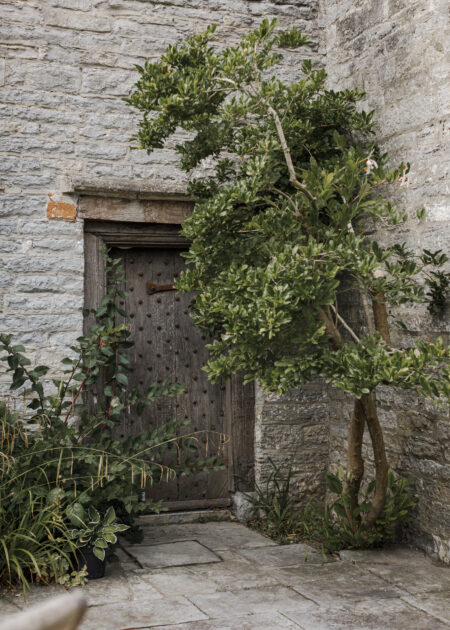Inspiration of the Week: the many lives of a 17th-century Somerset farmhouse
The history behind the handsome Compton Street is a rich one. Now, with the prospect of new owners comes a chance for a new chapter in its story

The small Somerset village of Butleigh, near Glastonbury and Street, has been around for a long time. It’s thought that the Dobunni, one of the Celtic tribes living in the British Isles in the Iron Age before the arrival of Caesar, had a settlement here. Later, after the Romans invaded Somerset in 47CE, they too set up camp, building a large villa that was occupied until the 7th century.
A thousand years later and the parish was still extant, a rural community surrounded by pastureland. The house you see here, originally known as Lower Rockes and currently for sale, was built around this time, as we can tell from a pierced piece of pennant stone, marked 1673. Though it was named, along with another in the village, for a local vicar called Thomas Rocke, it was constructed as farmers’ lodgings. Today, reminders of its agricultural past linger: flagstoned floors with remarkable patina, for instance, and doors and beams hewn in hefty timber.
As this part of the south-west grew in stature, thanks in part to its burgeoning dairy industry, so the house grew smarter. In the 19th century, the house benefited from some gorgeous Georgian aggrandisements – among them a new façade in coursed and squared lias rubble, with a roof of double Roman tiles with brick chimney stacks. Typically symmetrical and with large sash windows (shuttered inside), it’s a picture of period prettiness.
Later in the century, Compton Street became home at one point to Robert Neville-Grenville, the last Squire of Butleigh. A skilled engineer, he developed his own steam carriage and also founded a cheese-making school in the house, where students learned to make the local delicacy: cheddar. This particular moment in history is marked by the kitchen’s ceiling hatch, which once housed a winch used to manoeuvre wheels of cheese.
In more recent times, sensitive restoration and delicate decoration have revitalised the house. Pared-back and peaceful, its bare-plaster walls and muted paint palette complement the ancient floors and unfussy woodwork wonderfully. And while new owners may want to make their mark, we wouldn’t blame them for not touching a thing. Either way, though, the tale of this quiet monument to the past isn’t over yet.
Compton Street, Butleigh, Somerset
View sales listing- A Private View: Rare as gold dust – an impeccably restored Huguenot house in SpitalfieldsHomes / Interiors
- A Private View: Two families, one colossal staircase, and a lifetime of shared adventureHomes / Interiors
- Crowded House: Five homes for the consummate hostHomes / Interiors
- Designer Stephanie Barba Mendoza brings mellifluous maximalism to AntwerpHomes / Interiors
- A Private View: A slate-clad structure completes this personal family portrait in LambethHomes / Interiors

